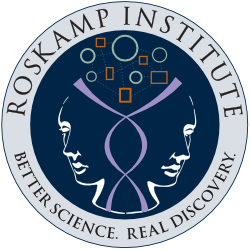From the Executive Director, Dr. Michael Mullan:
Alzheimer’s Update from the International Clinical Trials in Alzheimer’s Meeting (CTAD), Spain 2018.
The annual meeting of the world’s leading Alzheimer’s Disease clinical trial experts from both academia and industry was convened in Barcelona, Spain from October 24th to 28th. The meeting offers the opportunity for pharmaceutical companies and academicians to present their work on clinical trials for Alzheimer’s Disease. Ultimately, data presented at this meeting is what patients and their families really care about because the results of these clinical trials determine whether drugs will or will not become available to treat the condition. Currently, there are only four drugs approved for the treatment of Alzheimer’s Disease and none of these significantly slow the disease progression. However, researchers have spent decades trying to find medications which do exactly that. There were some hopeful results but also some significant failures revealed at the meeting. I will discuss the second group first.
BACE1 inhibitor setbacks: A class of drugs called BACE1 (beta-site amyloid precursor protein cleaving enzyme 1) inhibitors have taken years to develop but now many have advanced to late-stage clinical trials. Initially, the results looked very promising for this class of drugs, they being able to very significantly reduce the levels of amyloid, the small peptide thought responsible for driving much of the destruction in the brain which is the hallmark of Alzheimer’s Disease. However, these powerful effects seem to be accompanied by serious adverse events in as many as 6 out of 9 drugs being tested in this class. Not least of all, increased cognitive decline and neuropsychiatric symptoms have occurred in patients taking the test drugs. Obviously, increasing cognitive decline is the opposite of the hoped-for outcome. At the meeting, scientists and industry personnel were still trying to understand exactly why this effect was being observed. One of the reasons may be that, as well as producing amyloid, BACE1 produces other proteins and peptides in the brain, some of which may be very important for normal brain structure and function. Many discussions revolved around whether it might be possible to design BACE1 inhibitors that only inhibited the production of amyloid and not these other potentially beneficial substrates. That would entail much more work and essentially going back to very early stage clinical trials.
Advances and Questions of anti-amyloid antibody treatments: The two main industry drugs that have shown most promise in clinical trials are called Aducanumab and BAN2401, the former being developed by Biogen and the latter being co-developed by Biogen and Eisai. Encouragingly, additional studies over 36-months with Aducanumab at its highest dose reinforced earlier positive results showing that the rate of decline could be slowed. The BAN2401 data was more equivocal, there being an imbalance in the relative number of genetically predisposed versus non-genetically predisposed subjects taking the drug in the clinical study. Such imbalances can produce apparent clinical effects which are not reproduceable in more genetically balanced studies and many questions were unanswered in this aspect of the most recent BAN2401 clinical study. It is not clear how Biogen and Eisai are going to resolve this issue, except potentially by advancing their planned Phase III clinical trial with the same drug and larger numbers of patients.
Intravenous versus Oral Administration, safety and cost: Although the antibody treatments look promising, it is disappointing that the orally-available BACE1 inhibitors have run into such difficulties. Administration of antibodies for Alzheimer’s Disease, if approved, will require regular monthly or bi-monthly visits to infusion clinics as the drugs are given intravenously. In addition, patients will need careful monitoring because a high percentage of patients develop abnormal findings on MRI of the brain. These findings represent potential harmful brain swelling which has to be carefully monitored. The cost of the antibodies and the careful MRI monitoring may make these expensive treatments and may thus reduce availability to certain populations which is obviously undesirable. This is one reason why we believe that drugs like nilvadipine, which is being developed by the Roskamp Institute for use in Alzheimer’s Disease, may have an important role in the treatment of Alzheimer’s Disease in the future. Data presented at the CTAD meeting illustrated the 50% reduction in rates of decline of early-stage Alzheimer’s Disease cases after once per day oral dosing. The drug was well tolerated in the Alzheimer population, despite the fact that it was originally developed to lower blood pressure. Given the paucity of positive clinical trial results, it’s imperative that drugs like nilvadipine and its derivatives continue to be developed by groups like the Roskamp Institute. Equally important is that the mode of action of nilvadipine suggest that it is not exclusively targeted towards amyloid, but also hits the two other main pathologies of Alzheimer’s Disease, namely tau (tangles) and inflammation.
In addition to the above, one of the overriding realizations that is emerging in the field is that the disease is unlikely to be cured by targeting a single aspect of the disease. For instance, one of the clear lessons from all the anti-amyloid trials that have been conducted is that if such drugs are to work, then they must be applied very early in the disease process: they are not useful once individuals have had the disease for a few years. Other targets such as tau and inflammation (and others that have yet to be fully explored) may be more appropriate in later-stage disease. Therefore, drugs that hit a variety of targets may ultimately be more beneficial than the highly specialized anti-amyloid drugs which are currently being developed. Alternatively, other drugs may have to be used in combination with the anti-amyloid therapies to ensure long-lasting and more comprehensive effects. We, at the Roskamp Institute, are much encouraged by the progress that has been made in the field as we continue to contribute to alternative or complementary approaches to slow or halt the condition.

